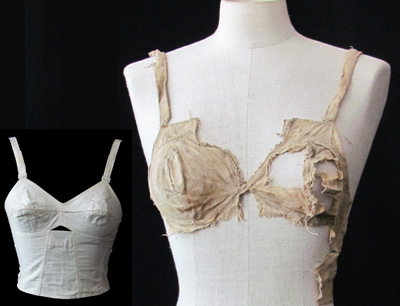Linen bras, a fully preserved linen male hose, 800-1000 fragments of shoes, embroidered lacing…these are just some of the spectacular findings, which turned up in 2008, when the archaeologists started to sieve a hoard of material probably used as insulation under a floor at the castle of Lengberg in Eastern Tirol around the second half of the 15th century. A large team of archaeologists, volunteers and “friends” at that point meticulously examined more than 25 m3 of debris.More than 17 boxes were filled with more than 4000 fragments stemming from at least 934 objects.
A preliminary overview tells of a cache of more than 200 coins, 160 coloured playing cards of carton belonging to more than four different stacks, objects of iron and alloys, bones, horn, glass, ceramics plus more than 50 pieces of writings from amongst other things accounts, chits and liturgical texts.
And then there are the textiles from the 15th century. Apart from more than 2700 fragments of woollen rocks, embroidered silks and linens plus buttons, pompons etc. the most spectacular findings were the linen underwear: bras, pleated shirts for children or young women, fragments of hats and linen headgear plus a piece of a (probably male linen) underwear complete with a fragment of a codpiece. Remarkably the linen pieces are in much better condition than the woollen fragments.

Especially the four bras have garnered interest. Two of the more fragmented pieces seem to have been used as a kind of “false” shirt ending just below the breast and used to cover a décolleté. Both these bras have decorated lower ends with finger-loop-laces – sown on with lace-stitches and resulting in a kind of simple needle-lace decoration. For the techniques used see here. The third bra looks nearly modern with two broad straps and a possible back strap. This bra is worked with needle-lace on the shoulder straps and sprang-work between the cups. Finally there is a fourth bra, which looks as if it was a typical longline-bra from the 1930s. Especially the well-preserved fragments of laces are important as they demonstrate an earlier introduction of these techniques than hitherto expected.
When found the archaeologists were astounded. Were they really 15th-century pieces of lingerie? However, the textiles were recently carbon-14 dated confirming the date of the finds to the 15th century.
The research methods are varied: apart from more traditional archaeological textile-research, tests of DNA in order to decide on the gender of the person having worn the garments are undertaken as well as chemical analyses in order to define the pigments used.
The detailed research is undertaken by Beatrix Nutz and shall lead to her PhD. As of now only some results have been made widely available at the homepage of the University of Innsbruck. Responsible for the whole project of analysing and cataloguing the cache of material culture from the 15th century is Dr. Harald Stadler at the University of Innsbruck.
Read about the bras
Read about the lacemaking
Read an article by Beatrix Nutz in the BBC History Magazine (subscription only)
Arbeitsgruppe Bekleidung und textile Techniken des Instituts für Archaeologen
